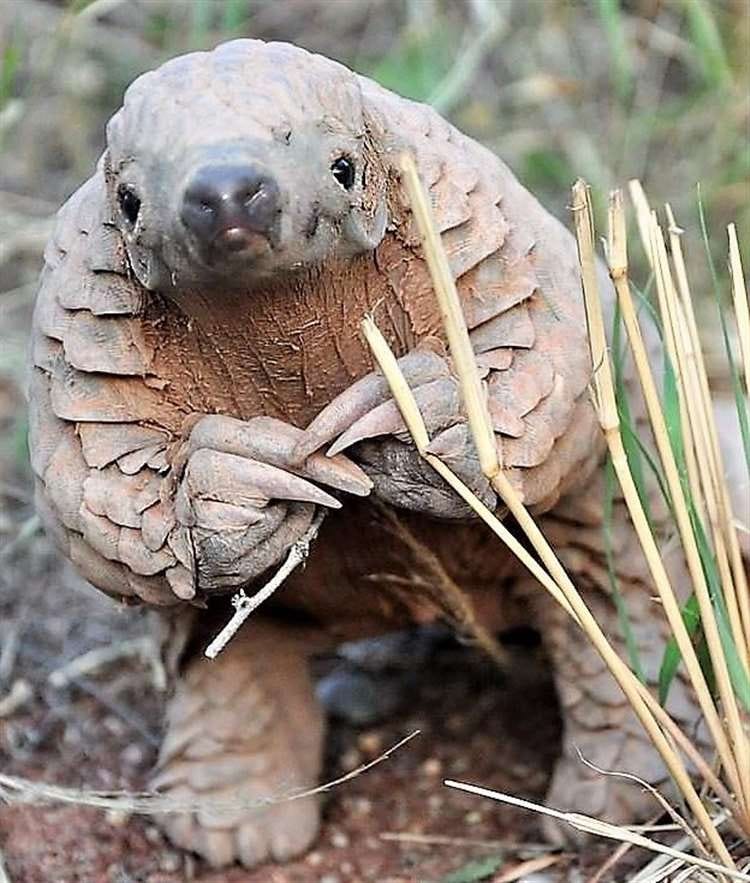I hope you’re enjoying these episode titles. They’re mostly all word play on movie titles, books or products, but I suspect a lot of New Zealander’s wouldn’t have heard of Chips Ahoy.
A standard American cookie. Call it a biscuit at your peril.
More surprising was that less than 30% of our audience were actually from New Zealand.
I don’t know how many were Kiwi’s far from home connecting to their homeland like I did with the Kākāpō Files, but I suspect there aren’t enough of us spread around the globe to account for it.
The Kākāpō is simply an enigmatic bird which endears itself to people from all walks of life and from around the world, despite the natural riches they might have in their own backyards.
I feel the same way about the Pangolin.
We don’t have Pangolins in New Zealand, but some aren’t far away in South East Asia and I bloody love them.
“Hello, might I trouble you for a cup of sugar?” *Jez bursts into tears
I think they pull on heart strings in the same way kākāpō do. That engaging face and inquisitive demeanor. There’s a preamble to a conversation in the way they look at you which instigates an almost unavoidable response of “Yes, how can I help you?”
The answer to which of course is not to turn them into soup.
Both Māori and colonial settlers ate kākāpō, which is horrific to think about now, but common practice back then.
It’s currently common practice to eat pangolins in places like China and Vietnam, while their scales are turned into ‘medicines’ or more accurately ‘folk remedies’.
“Oh, oh you’re going to eat me? Oh odds and bodkins. I’m ever so sorry for keeping you Mr Human sir, I’ll just have a quick cuppa and pack my napsack.”
The Pangolin is one of the most trafficked animals in the world, accounting for 20% of the entire black market. And it absolutely puts the shits up me.
There are eight different kinds of Pangolin and we have quickly made all of them endangered.
Our unrelenting ignorance and selfishness driving more species to extinction as we munch our way through the planet, and I can’t stomach it.
It makes me wonder when that moment of self reflection comes, where we look a creature in the eye and decide it is rare and precious and ‘worthy’ of saving?
It happened with the kākāpō and I dearly hope it happens with the pangolin.
We don’t touch on the history of saving the kākāpō much in this series, the podcast is a ‘paint by numbers’ report on the breeding season itself, punctuated by stolen content from Kākāpō Recovery’s social media pages.. Hi Brodie.
But if you want to learn more about the history of kākāpō conservation, there is a wealth of content out there in the form of books, documentaries and good old fashioned Wikipedia.
Richard Henry is a good place to start, with his first attempts to save the species which began back in the 1800’s.
The Kākāpō’s full story is a remarkable one and it’s a sad indictment on ourselves that we allowed the entirety of the population to slip to just 51 total individuals before we began to turn things around.
I hope we don’t make the same mistakes with the Pangolin.
Here’s a podcast episode for you which focuses on their plight.
<iframe title="Africa’s epicentre of pangolin scale and ivory trade – tackling the drivers of wildlife crime" height="150" width="100%" style="border: none;" scrolling="no" data-name="pb-iframe-player" src="https://www.podbean.com/player-v2/?i=62ayh-101c630-pb&from=pb6admin&download=1&share=1&download=1&rtl=0&fonts=Arial&skin=1&btn-skin=1" allowfullscreen=""></iframe>













Share this post